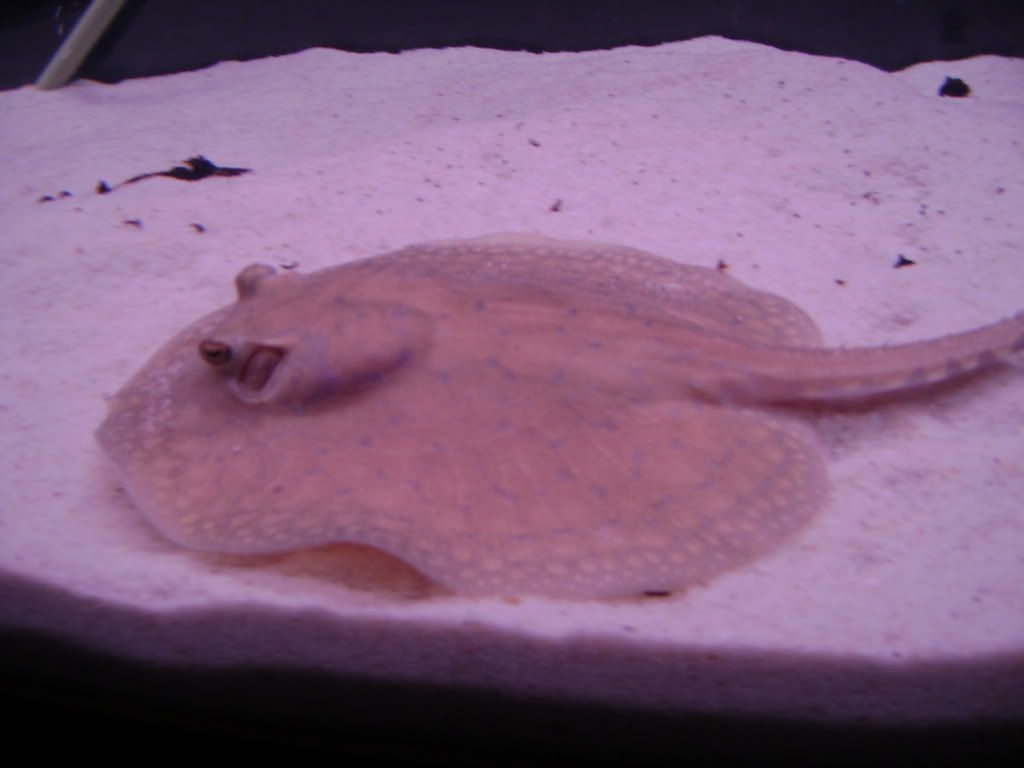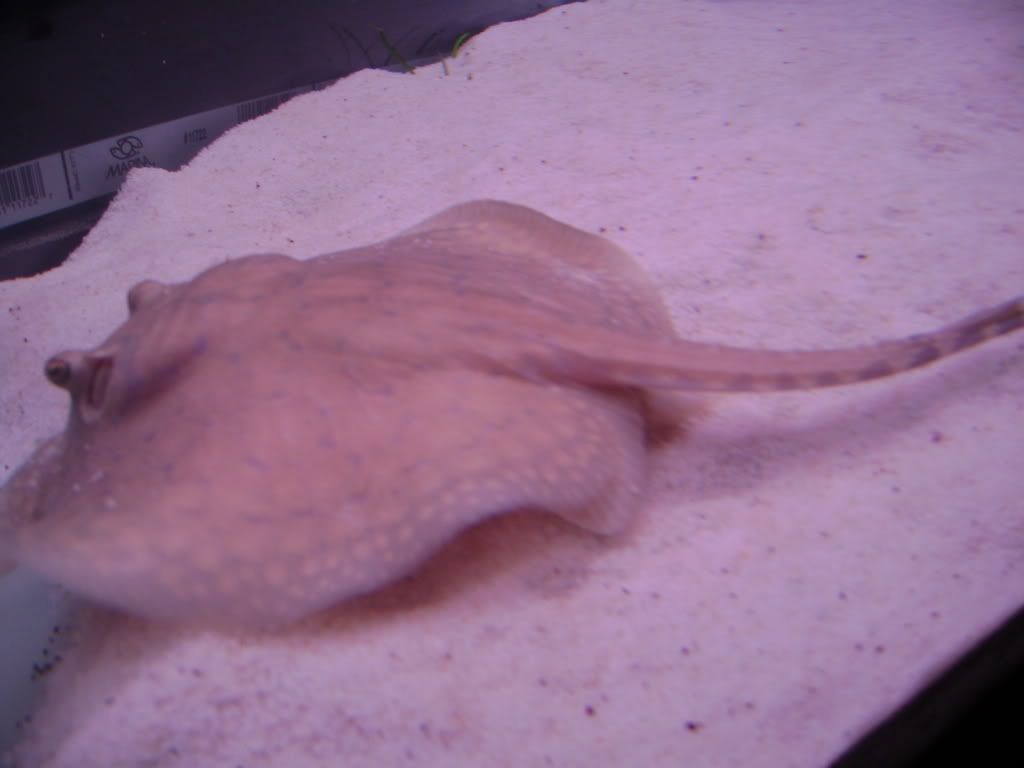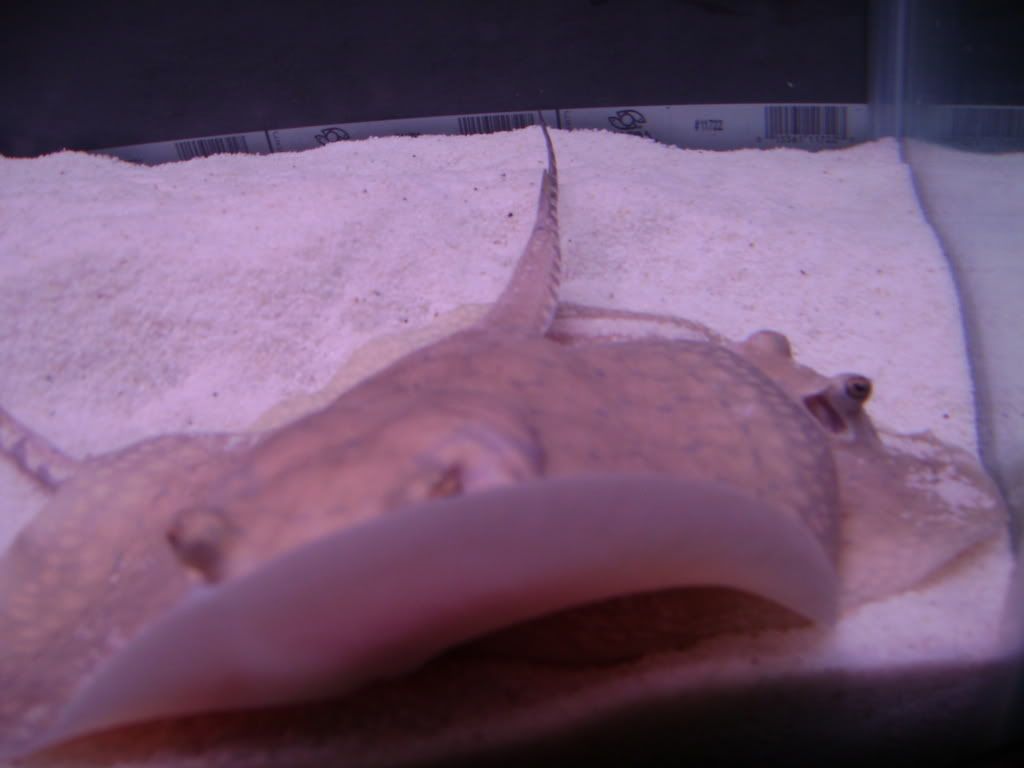This is the first post on freshwaterstingray.blogspot.com! I'm still trying to get the layout the way that I want for the site-trying to get some cooler colors. I'm going to update this site weekly with pictures and new information so be sure to check back every week!
Below are a few pictures of my old potamotrygon orbinyi stingrays that I no longer have. Almost all freshwater stingrays kept in home aquaria are from the potamotrygon genus. Potamotrygon stingrays are native to the Amazon River in South America.
The smallest species of stingray in the potamotrygon genus is P.(short for potamotrygon) scobina which reach a disk size(not including the tail) of around 13 inches. The reason that P.scobina along with several other species are almost never seen in the united states is because there is currently a ban on exporting stingrays from Brazil.
Large tanks are required to keep stingrays. A lot of people use indoor ponds to house there stingrays because they are 1.)cheaper and 2.)stingrays need a larger foot print which is easier to provide in a pond vs. a tank.
The stingrays that you will see in the pictures below where in a quarantine tank-a quarantine tank is used to make sure that your fish are healthy before adding them to your main display tanks. Also if a fish is required to be treated with medicine the quarantine tank has a smaller volume=less medicine=less money.
Where I live freshwater stingrays are rarely found locally and when they are they are not in good shape. When purchasing a stingray there are several things to look for 1.)make sure that there is not a dent on the forehead 2.)make sure that the pelvic bones are not sticking up, these are both signs of severe weight loss 3.)young rays can be very difficult to get to eat, if you are purchasing the fish locally make sure that you watch it eat 4.)make sure that the ray's disk lies flat and is not curved around the edges, this is a common disease known as the death curl and will most likely(obviously) result in death. and 5.)make sure that there is not a white fungus around the barb.
The most common sold stingrays are retic(short for reticulated) and motoro stingrays. Retic stingrays are generally sold as "teacup stingrays" when they are under 5"-this is extremely incorrect. Retics can reach a disk size of around 14" with larger tails than other species of stingrays. Smaller retics are known to be very hard to get to eat.
When you get your stingrays you should first try feeding them either live blackworms or bloodworms because there strong scent attracts stingrays to them. Other foods for stingrays include earthworms, knightcrawlers, ghost shrimp, shrimp, krill, crayfish, beefheart, clams, mussels, silversides and occasional feeder fish.
Motoros are very hardy(as far as stingrays go) and make great first rays. However they get pretty big, their disk can get to be larger than 30"! This is why a lot of stingray keepers have ponds and not tanks.
A 30" fish needs a big filtration system. A DIY wet dry filter is the best way to go. For more information google DIY wet dry filter and you will get a ton of good info. The best thing about a wet dry filter is that you can customize them to your needs.
Another essential part of setting up a stingray tank/pond is a heater. Stingrays, unlike regular aquarium fish can not sense the heat produced by a heater-therefore you will need some type of guard to prevent the stingrays from getting burnt. I recommend you heat your stingray tank to 82F.
A stingrays disk is very sensitive and you need to be careful of everything that you put in the tank, most people keep bare-bottom tanks because it is easy to clean and you don't risk having your stingray get cut on anything, but if you don't like that look I recommend pool filter sand-it is cheap and doesn't stick to rays another alternative is pea gravel.
The key to keeping stingrays healthy are water changes. Change at least 50% of the water in your tank twice a week. Possibly more depending on your stocking level, size of tank and filtration system. Remember to add dechlorinator and make sure the temperature and ph of the water entering the tank are the same as the water currently in the tank.
As an ending note, stingrays are called STINGrays for a reason-they can sting and it will hurt-badly, always handle your stingray with extreme care. They are venomous animals-respect that. Use heavy gloves when working in a tank with stingrays and try to never lift them out of the water, use rubbermaid containers if you ever have to move them from tank to tank. Try never to use a net as a stingray's barb can get caught in the holes in the net.
To sum everything that you just read up:
-you need a large tank with a large footprint, preferably a pond to keep stingrays
-there are several signs to look for to insure that you are buying a healthy ray
-a wet dry is the best type of filtration for a stingray tank
-you need a heater guard
-you need to do a lot of waterchanges
-stingrays are venomous animals that need to be treated with respect
And now for the pictures of my old orbinyi stingrays:



1 comment:
hey michaela
i have recently aquired 2 motoros from marajo river there beutiful fish
all i am concernned about is there feeding theey are both male and at 10" disc size do you think id be able to hand fed them and force some food into them also what is theer favourite food something irrestible for them ive tried prawns ,large bllod worms ( although i think they might have tried some ) what do i do ...
Post a Comment